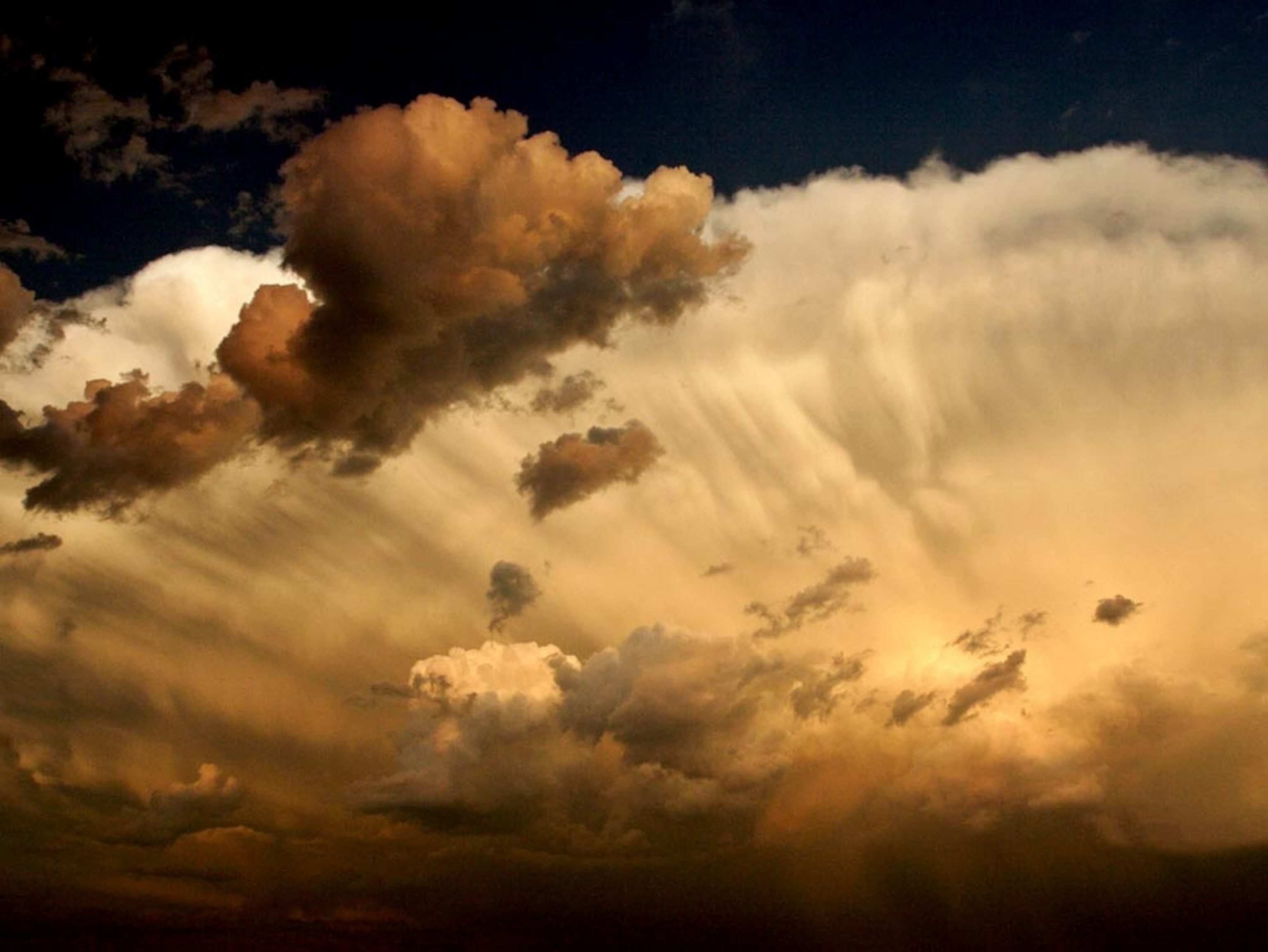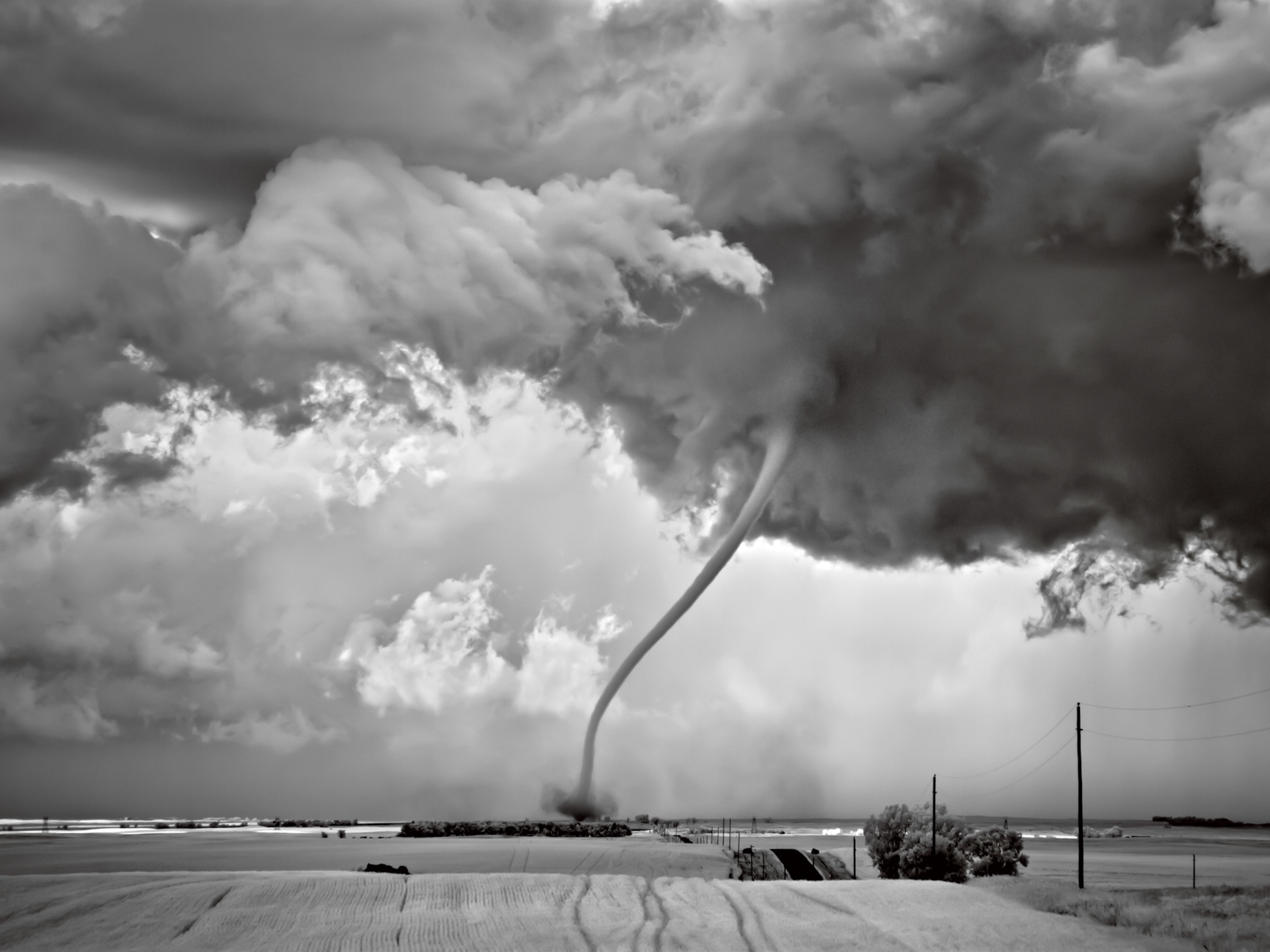From giant puffs billowing toward the sun to thin wisps slinking past the moon, clouds come in countless shapes and sizes. This makes them wonderful fodder for the imagination—at some point, hasn’t everyone looked heavenward and seen a fire-breathing dragon floating by? Aside from sparking creativity, clouds serve several important scientific purposes, from helping meteorologists predict the weather to facilitating life on Earth.
Recipe for a cloud
The building blocks of clouds are water and particles—of dust, dirt, or sea salt—known as cloud condensation nuclei. These nuclei are everywhere in the atmosphere. They attract water vapor and as they ascend the vapor condenses to form liquid water or ice, which results in the formation of tiny globules called cloud droplets. Much smaller than raindrops, cloud droplets are extremely light and amass while they float, mixing with air to form the fluffy formations we see suspended in the sky.
Cloud atlas
Clouds generally form within the troposphere, or the layer of atmosphere closest to the earth. As they rise and fall, they may appear in infinite variations. To create some order scientists have established three broad categories into which most clouds can be grouped.
At the upper reaches of the troposphere you’ll find high clouds, which, depending on geographic location, occur between roughly 10,000 and 60,000 feet. Below that is the home of mid-level clouds, which generally occur between 6,000 and 25,000 feet. Finally, closest to Earth’s surface are low clouds, which hover at or below 6,500 feet.
Top ten
Within each of these three tiers, scientists further organize clouds into ten broad categories based on the general shapes the clouds take.
High clouds are classified as either cirrus, cirrostratus, or cirrocumulus. Cirrus clouds are made of ice crystals and appear thin, white, and wispy. Cirrostratus clouds are whitish and transparent and tend to blanket the whole sky, sometimes creating a halo effect around the sun or moon. Cirrocumulus clouds are also white and can be sheet-like and rippled.
Mid-level clouds are usually gray and are identified as either altocumulus, altostratus, or nimbostratus. Altocumulus clouds are full of liquid water but generally do not produce rain. They are patchy and often appear as ripples or rows. Altostratus clouds cover the sky but are darker than cirrostratus clouds and may give the sun or moon a fuzzy appearance. Altostratus clouds may portend a storm. Nimbostratus clouds are thick and dark and can produce both rain and snow.
Low clouds fall into four divisions: cumulus, stratus, cumulonimbus, and stratocumulus. Cumulus clouds are a cloud-spotting favorite: They are big, white, and cottony and—depending on your imagination—may look like a bear, an apple, or any other familiar object. Cumulonimbus clouds are heavy and dense; they tend to build dramatically upward and are often harbingers of thunderstorms, hail, or tornadoes. Stratus clouds appear as a thin gray layer in the sky. Stratocumulus clouds are patchy, gray and white, and usually resemble a honeycomb.
Clouds beyond
Of course, all of the clouds that exist can’t be contained within such limited parameters. Ever see one that looks like undulating waves? That’s called a Kelvin-Helmholtz cloud, named for the physicists who first studied its flowing formation. How about those pouch-like protrusions bulging from underneath larger clouds? Those are called mammatus clouds. Contrails are long bands of clouds produced by aircraft. Otherworldly looking lenticular clouds resemble stacks of giant disks rising in the sky.
No matter what shape or size they are, clouds are essential to life on Earth. During the day they help protect us from the sun’s intense heat. At night they act as a blanket to keep us from getting too cold. They also provide precipitation and signal weather changes and patterns.
But clouds aren’t unique to our planet. Astrophysicists who study atmospheres on other planets know that Mars, for example, has clouds similar to ours. Continuing to learn about weather on other worlds, they believe, will help us better understand—and predict—our own.
















